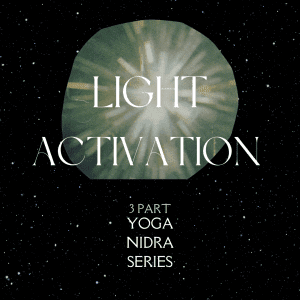How do you like to wake up in the morning?
Do you prefer a gentle and soothing start — an awakening that unfolds slowly, from within?
Or do you like to be startled awake — the way you might jump out of your skin upon hearing a jarring sound that bursts your eyeballs open?
If you chose the first experience over the second, you’d prefer a grounded and regulated nervous system experience: one that is low-stress on body, mind, and spirit.
The second experience is valid too, as a nervous system response to fear and surprise. However, this response causes a sudden rise in stress hormones, which wreak havoc on body, mind, and spirit overtime.
The nervous system is the central intelligence system that moderates, regulates, fuels, and informs our daily lives. It is an extension of the brain itself; many thousands of branches extend off of the central nervous system tree (located through the spine) to animate and infuse life-energy into every place of the body. You could call the nervous system the mind that extends throughout the whole body.
Signs of a dysregulated nervous system include: difficulty sleeping, mild or extreme anxiety, heart palpitations, lack of energy, irritability, mood swings, short and shallow breathing, feelings of numbness, and scattered thoughts, to name a few.
But what does this have to do with springtime?
Spring is a sensory awakening. The natural environment comes alive in springtime, which means a burst of energy, light, and growth comes through the earth, and through our nervous systems. Just take a look at the behaviour of birds and animals during the arrival of spring — they run around bright-eyed and bushy-tailed, singing their hearts out! Not to mention the sense of power coming through the plants as they bud and prepare to burst open in fertility.
Spring is a season of resurgence that can be tantalizing or traumatizing, depending on how well-equipped we are to hold the precious balance of energies in body and mind. If you’re like me, you probably have a lot of new intentions and plans for spring, and we’re going to need the energy to follow through with them! The good news is that we can welcome a more tantalizing and exciting experience through this season (and indeed, through our inner spring, as cycling womben) by taking care of the nervous system, naturally, with these 3 easy rituals.
Wouldn’t it be nice to gently rise and wake up with the earth? To meet this season (and each day) with fresh, flowing energy and an open heart? This is the intention for supporting the nervous system — one of the ultimate self-care practices.
Keep reading if you’re interested in my 3 step protocol to support your nervous system any time, but especially as we burst forth into spring.
- Morning Belly Breathing
Your breath and your nervous system are like twins. One relates directly to the other, so if you affect your breathing, you affect your nervous system. The breath is pretty well at the heart of our nervous system experience. Noticing your breath cycle is a great place to begin on the path to regulating the breath and the nervous system and linking them in harmony. Your breath cycle will reveal unending information about yourself; whether you are well-regulated or not, the breath will tell you. It is like a feedback system that informs the nervous system and vice versa.
The breath protocol:
Try simple breath awareness first thing upon waking each day, to set the tone for being more aware of your breathing patterns throughout the day. There are 3 steps to tuning into your breath: 1. close your eyes 2. notice where in your body you feel you are breathing 3. notice the length and depth of your breath.
To help support a well-balanced, regulated nervous system, we want to be breathing primarily with the diaphragm, otherwise known as ‘belly breathing.’ Deep belly breathing stimulates the gut brain and massages the nervous system for increased calmness and groundedness. In addition, breathing with the diaphragm is the most efficient and effective way to breathe!
If you notice your breath is rising and falling high in your chest, and is short and shallow, this is a sign from your nervous system that it’s time to come back down into the body and get grounded. Check out this short video to practice belly breathing right now, or tomorrow morning!
2. All Day Herbs: Oat Straw & Lemon balm
Herbal-infused water (also known as tea ;)) is a great way to supplement extra vitamins, minerals, and more with your daily intake of fluids. In my mind, herbal tea is like an enhanced experience of water, and we can replace most of our water intake with certain gentle and supportive herbs. Below are two recommendations from my herbal-enthusiast heart to yours. I have a personal relationship with these two plants, which has been developing for years. My own body is very comfortable and relates well with these plants; I’ve only experienced positive benefits, like calmness and increased metabolism. However, you should always check your own relationship with these plants to understand the proper dosages for yourself. Use your intuition and, when necessary, check in with a healthcare practitioner to see if they’re right for you.
The herbal protocol:
Oat straw infusion (daytime)
– 1 tsp of dried oat straw per 8 oz of water. Steep oat straw in boiled water for 10-15 min. Sip and enjoy.
This gentle herb boosts metabolism, supports heart function, and coats the nerves for a soothing effect on the nervous system. Oat straw has a natural ability to boost our enthusiasm for life, making it a perfect ally for springtime, as the sun beckons us to come out and play. Someone experiencing a somewhat depressed/under-active nervous system and a general lack of motivation may benefit from daily oat straw infusions. Because of its soothing effect on the nerves themselves, oat straw is known to gently stimulate and awaken the senses, and cultivate an embodied experience of sensual pleasure. With oat straw in your day, you’ll be making love with life.
Lemon balm infusion (day or nighttime)
– 1 tsp of dried lemon balm herb per 8 oz of water. Steep lemon balm in boiled water for 5-7 min. Sip and enjoy.
This unassuming herb induces calmness and can aid in bringing down stress levels when we are in fight or flight. I’d recommend a small dose of lemon balm for daytime drinking to begin. If you’re already experiencing low energy levels, large amounts of lemon balm can induce sleepiness. However, if your energy levels are low due to chronic stress and depletion, lemon balm will be your friend. Some might prefer to enjoy lemon balm in the evening to help down-regulate and prepare for a good night’s sleep. Again, it’s all in how you respond to lemon balm! Take time to get to know how these herbs work with your body and your internal rhythms.
3. Evening Yoga Nidra
Yoga Nidra is an ancient meditative practice that is now being backed by scientific research and evidence supporting its effect on the body-mind system, particularly the nervous system. Yoga Nidra works wonders on the health and regulation of the brain and nervous system. Through Yoga Nidra, you gain practice in shifting ‘gears’ and flowing through different brainwave states. When you are in a fight or flight stress response, your brainwave activity is fast and erratic; Yoga Nidra gently guides you out of this stress response and into slower, smoother brainwave frequencies, naturally and safely. This supports the nervous system, and especially the sleep cycle, which is the bedrock of health and balance.
Yoga Nidra is also a heart-centered practice. The heart is the central energetic hub in the subtle body. Connecting with the magnetic field of the heart — as we do in yoga nidra — supports the free flow of energy throughout your whole system, which in turn supports the nervous system and your connection to inner guidance!
Read more on Yoga Nidra here.
The Nidra Protocol:
Try a short Yoga Nidra practice to begin or end your day. All you need is about 20 minutes and a comfortable place to lay down. When you decide to practice Yoga Nidra will depend on your intentions and your needs. This practice helps us tune into inner guidance and sets us up for a day (or night) of presence and connection.
Here are my suggestions:
Feeling anxious and scattered? Use Yoga Nidra to massage and tune your system. This free Nervous System Reset Yoga Nidra will add an extra supplement to your daily routine.
Feeling depleted and heavy by the end of the day? Try this free Review of the Day Nighttime Yoga Nidra to help you let go and guide you into a restful night’s sleep.
Follow this 3 step daily routine for one full week and notice the difference in how you experience life!
I am confident that adding even just 1 of the above rituals to your daily routine will offer you a nice lift and kick-start your spring season with a sense of openness and steadiness. Just a few moments of intentional nervous system care each day will make all the difference.
When we are grounded and well-balanced, we are able to live out the lives we truly desire, in relationships that help us flourish, in alignment with our spring intentions, and in compassion with ourselves. This is what I hope for all of us as we head out into the spring season.
Let these rituals carry you through the transition, and remember to enjoy yourself!
Love,
Jaylyn
P.s., Are you interested in designing a personalized protocol to live your best spring season? Reach out to me about a 1:1 program! I love intuitively guiding others to discover the daily rituals & routines that suit them best.



